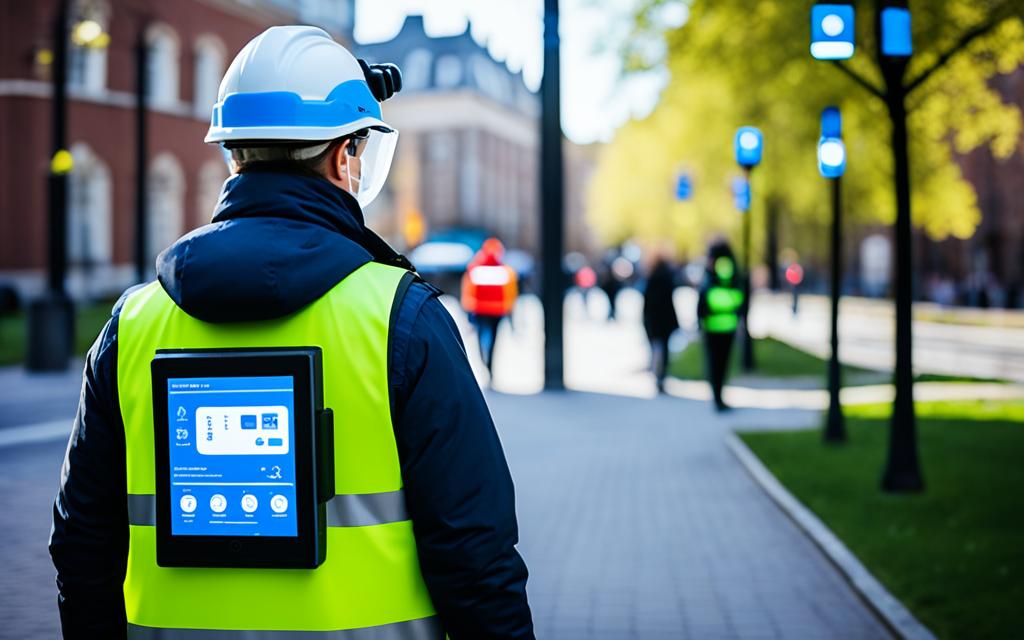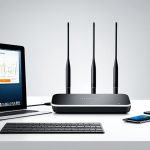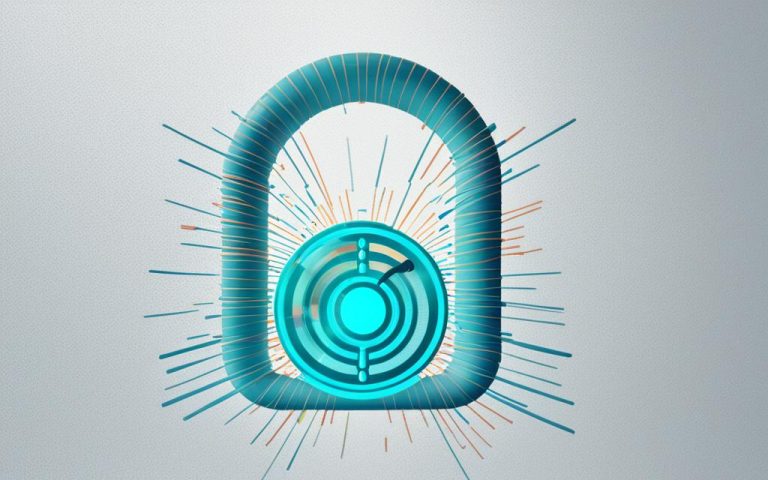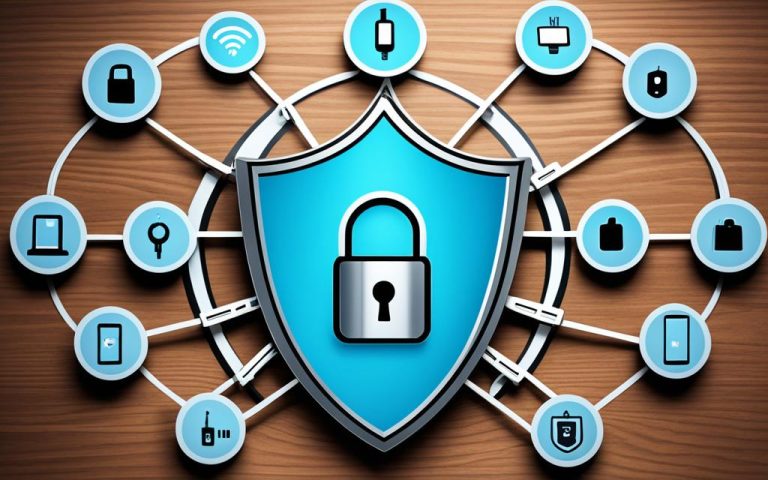Personal Area Networks (PAN) are revolutionizing public safety measures by enhancing communication and coordination in emergency situations. As technology advances, so do the threats to public safety, necessitating the development of better strategies to combat them. Wireless systems, specifically PAN, have emerged as a crucial component in improving public protection and disaster relief agencies’ capabilities.
The transition from narrowband to broadband public safety networks (PSNs) presents challenges that require careful planning and infrastructure sharing. Researchers have explored long-term evolution (LTE) technologies, such as LTE and its related technologies, to provide mobile broadband services for public protection and disaster relief agencies. Spectrum sharing models and infrastructure sharing methods have also been studied to enhance capacity during emergency situations.
The development of 5G and WPA3 standards further enhances the security of PAN and public safety networks. These advancements in PAN technology ensure that public safety agencies can effectively communicate, coordinate, and respond to emergencies, ultimately leading to enhanced public safety measures.
Advancements in PAN for Public Safety
Advancements in Personal Area Networks (PAN) are revolutionizing public safety networks and enhancing emergency response capabilities. With the transition from narrowband to broadband networks, PAN is enabling the integration of video surveillance services and facilitating improved communication among different entities involved in public safety.
LTE-based technologies have emerged as a powerful tool for providing mobile broadband services to public protection and disaster relief agencies. These technologies support high-speed data transfer and enable seamless connectivity in critical situations. Furthermore, the adoption of 5G networks and the implementation of WPA3 standards further enhance the security and efficiency of PAN in public safety applications.
By leveraging advancements in PAN, public safety agencies can ensure effective communication, coordination, and response in emergency situations.
Advancements in PAN technology have transformed public safety networks by enhancing communication and enabling efficient emergency response. With the integration of video surveillance services and improved connectivity, PAN plays a crucial role in safeguarding public protection and disaster relief efforts.
PAN enables the transition from narrowband to broadband networks, enabling a wide range of data and services to be transmitted efficiently. This shift empowers public safety agencies to leverage real-time video feeds, enabling better situational awareness and decision-making in critical situations.
Moreover, the adoption of LTE-based technologies further enhances the capabilities of PAN. LTE offers high-speed data transfer, ensuring seamless communication between first responders, command centers, and other essential personnel during emergencies. This technology provides reliable and secure communication channels for public protection and disaster relief agencies, enhancing overall emergency response capabilities.
“Advancements in PAN technology have greatly improved our ability to respond to emergencies effectively. The integration of video surveillance services and the transition to broadband networks have enhanced our situational awareness and coordination efforts, enabling us to better serve our communities.” – Chief John Smith, Fire Department
With the impending deployment of 5G networks and the implementation of WPA3 security standards, PAN is set to become even more efficient and secure. The enhanced bandwidth and reduced latency of 5G networks will enable faster data transfer and support emerging technologies such as augmented reality and smart devices in public safety applications.
Furthermore, the adoption of WPA3 security standards strengthens the overall security of PAN and public safety networks. WPA3 provides advanced encryption protocols, protecting sensitive data from potential cyber threats. Upgrading PAN devices to support WPA3 ensures the integrity and confidentiality of communications, further bolstering the reliability and trustworthiness of these networks.
Benefits of Advancements in PAN for Public Safety:
- Improved situational awareness through the integration of video surveillance services
- Enhanced communication and coordination among first responders and command centers
- Faster data transfer and reduced latency with LTE-based technologies
- Increased security and resilience against cyber threats with WPA3 standards
- Preparation for future technologies and capabilities with the deployment of 5G networks
The advancements in PAN for public safety are transforming the landscape of emergency response. By leveraging these advancements, public safety agencies can better protect communities, minimize response times, and save lives.
Infrastructure Sharing and PAN
Infrastructure sharing plays a vital role in the development and deployment of Personal Area Networks (PAN) for public safety networks. By sharing infrastructure, resources are utilized efficiently, costs are reduced, and collaboration between different stakeholders is facilitated. Various countries have adopted different approaches to infrastructure sharing, taking into account factors such as population distribution, geographical maps, network deployment status, budget, and commercial operation regulations.
Research has focused on the techno-economic motivators and challenges of infrastructure sharing for PAN and public safety networks. One approach is the integration of PAN with existing infrastructure, such as dedicated and commercial LTE-based networks. This integration allows PAN to meet the data-intensive demands of public protection and disaster relief agencies, while simultaneously reducing deployment costs and time.
To illustrate the benefits of infrastructure sharing for PAN and public safety networks, consider the following table:
| Benefits of Infrastructure Sharing | Examples |
|---|---|
| Efficient use of resources | Sharing existing towers and infrastructure instead of building new ones for PAN deployment. |
| Cost reduction | Shared infrastructure leads to lower capital and operational expenses for PAN implementation. |
| Collaboration between stakeholders | Shared infrastructure allows for better coordination and cooperation between public safety agencies, telecom operators, and other relevant entities. |
These infrastructure sharing models ensure that PAN and public safety networks are efficient, economically viable, and capable of handling emergency situations effectively. By leveraging existing infrastructure and pooling resources, PAN can be deployed more rapidly and cost-effectively, resulting in enhanced public safety measures.
The Challenges of Infrastructure Sharing
“Effective infrastructure sharing requires careful planning and coordination among various stakeholders. It involves addressing technical, legal, regulatory, and financial aspects to ensure seamless integration and operation of PAN within existing broadband networks.”
While infrastructure sharing offers numerous benefits, it also presents challenges that need to be addressed. Some of these challenges include:
- Lack of standardized guidelines for infrastructure sharing
- Ensuring fair competition among stakeholders
- Resolving legal and regulatory hurdles
- Managing cybersecurity and privacy concerns
- Maintaining quality of service during emergencies
Addressing these challenges requires close collaboration between public safety agencies, policymakers, regulators, and the private sector. Stakeholders must work together to develop robust frameworks that promote infrastructure sharing, while also safeguarding the security, reliability, and privacy of PAN and public safety networks.
The Role of WPA3 in Securing PAN and Public Safety Networks
Wireless Network Security is a critical concern when it comes to ensuring the safety and integrity of Personal Area Networks (PAN) and Public Safety Networks. With the increasing reliance on wireless communication in emergency situations, it is vital to implement robust security measures to protect against cyber threats.
One of the key advancements in wireless network security is the introduction of WPA3, the latest security certification standard developed by the Wi-Fi Alliance. WPA3 offers enhanced protection for both personal and enterprise networks, including PAN and Public Safety Networks. By upgrading devices and routers to support WPA3, organizations can significantly strengthen the security of their networks.
So, how does WPA3 enhance wireless network security? Here are some key features:
- Better Encryption: WPA3 offers improved encryption algorithms for personal and open networks, making it harder for malicious actors to intercept and decipher data transmitted over the network.
- More Secure Encryption: For enterprise-based networks, WPA3 provides more robust encryption methods, ensuring that sensitive data remains confidential and protected.
- Perfect Forward Secrecy: WPA3 introduces perfect forward secrecy, which generates a unique session key for each session, making it virtually impossible to decrypt previous sessions even if the encryption key is compromised.
- Session Key Generation: WPA3 improves the process of session key generation, making it more secure and resilient against attacks.
- Management Frame Protection: WPA3 includes measures to protect management frames, preventing unauthorized access and manipulation of network settings.
By leveraging these features, WPA3 significantly enhances the overall security of PAN and Public Safety Networks, making them more resilient to cyber threats and unauthorized access attempts.
Implementing WPA3 is a crucial step in securing wireless networks. However, it is equally important to ensure the implementation of strong passphrases and security settings for optimal protection. Regular updates and patches for devices and routers should also be prioritized to address any vulnerabilities that may arise.
The infographic below provides a visual overview of the key features and benefits of WPA3 in securing PAN and Public Safety Networks:

By harnessing the power of WPA3, organizations can enhance the security of their PAN and Public Safety Networks, enabling more secure communication and better response capabilities in critical situations.
Best Practices for Securing PAN and Home Networks
Ensuring the security of your PAN and home networks is crucial in safeguarding your personal, private, and confidential information. By implementing cybersecurity best practices, you can protect against malicious cyber actors and maintain a secure network environment.
To enhance network security, it is essential to regularly upgrade and update all equipment and software, including routers and connected devices. This ensures that you have the latest security patches and improvements to defend against emerging threats.
Secure habits also play a significant role in strengthening network security. Some recommended practices include:
- Back up your data regularly to prevent loss or unauthorized access to sensitive information.
- Disconnect devices from the network when they are not in use to minimize the risk of unauthorized access.
- Limit administrative access to the internal network to reduce the potential for unauthorized configuration changes or malicious activity.
Implementing strong security measures, such as WPA3 or WPA2 with robust passphrases, is crucial for protecting PAN and home networks from cyber threats. These measures enhance encryption and authentication, making it more difficult for attackers to gain unauthorized access.
Network segmentation is another effective strategy for limiting the impact of a potential breach. By separating devices into different network segments, you can isolate any compromised devices, preventing lateral movement and minimizing the potential damage to your entire network.
Firewall capabilities are essential for controlling network traffic and blocking unauthorized access. Configure your firewall to allow only necessary incoming and outgoing connections, and regularly review and update firewall rules to maintain an effective defense against threats.
“Implementing WPA3 or WPA2 with strong passphrases, network segmentation, firewall capabilities, and security software are essential for protecting PAN and home networks from cyber threats.”
Protecting passwords is vital to prevent unauthorized access to your network. Use unique, complex passwords for each device and change them regularly. Avoid using easily guessable passwords and consider implementing multi-factor authentication for an added layer of security.
Limiting the use of administrator accounts reduces the risk of unauthorized configuration changes and limits the potential impact of compromised credentials. Create separate user accounts with lower privileges for day-to-day activities.
Safeguarding against eavesdropping is critical in maintaining the privacy of your network communications. Use encryption protocols such as WPA3 or WPA2 to protect data transmitted over your network from being intercepted and compromised.
Finally, practicing secure user habits, such as being cautious of suspicious emails and websites, avoiding clicking on unknown links, and regularly educating yourself about the latest cybersecurity threats, helps strengthen the overall security of your PAN and home network.
To summarize, securing your PAN and home networks requires a comprehensive approach that includes regular updates, secure habits, robust security measures, password protection, network segmentation, firewall configuration, and user awareness. By implementing these best practices, you can maintain a secure and resilient network environment, protecting your personal and confidential information from cyber threats.
Conclusion
Personal Area Networks (PAN) have revolutionized public safety measures and emergency response protocols, providing enhanced communication, coordination, and security. The transition to broadband networks, coupled with the adoption of 5G and WPA3 standards, has played a significant role in these advancements.
By utilizing PAN technology, public safety agencies can better protect communities and respond to emergencies more efficiently. The availability of faster and more reliable communication networks enables seamless coordination between different entities involved in public safety, ensuring timely and effective response.
Furthermore, infrastructure sharing models have proven instrumental in improving the efficiency and resilience of PAN and public safety networks. These models enable the efficient use of resources, reduce costs, and facilitate collaboration among stakeholders.
However, as technology continues to evolve, ensuring wireless network security remains a top priority. Implementing cybersecurity best practices, such as regularly upgrading equipment and software, implementing strong passphrases, and maintaining network segmentation, helps safeguard PAN and home networks from malicious cyber actors.
By staying vigilant and implementing necessary measures, PAN technology will continue to enhance public safety measures and emergency response capabilities, leading to safer and more secure communities.
FAQ
How are Personal Area Networks (PAN) improving public safety measures?
PAN is revolutionizing public safety by enhancing communication and coordination in emergency situations. It allows for the integration of video surveillance services and facilitates collaboration between different entities involved in public safety.
What advancements have been made in PAN for public safety?
Advancements in PAN technology include the transition from narrowband to broadband networks, the adoption of LTE-based technologies for mobile broadband services, and the development of 5G networks and WPA3 standards for enhanced security.
What is the role of infrastructure sharing in PAN and public safety networks?
Infrastructure sharing allows for the efficient use of resources, reduces costs, and promotes collaboration between different stakeholders. It ensures that PAN and public safety networks are economically viable and capable of handling emergency situations effectively.
How does WPA3 contribute to the security of PAN and public safety networks?
WPA3, the latest security certification standard, provides enhanced protection for wireless networks. It improves encryption, supports features like perfect forward secrecy and session key generation, and strengthens the overall security of PAN and public safety networks against cyber threats.
What are the best practices for securing PAN and home networks?
Secure PAN and home networks by regularly upgrading and updating equipment and software, implementing strong passphrases and security settings, backing up data, disconnecting devices when not in use, and exercising secure user habits. It is also important to limit the use of administrator accounts and protect passwords.



















